Government and politics of South Carolina facts for kids
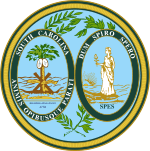
|
|
| Formation | 1789 |
|---|---|
| Founding document | South Carolina Constitution |
| Jurisdiction | State of South Carolina |
| Legislative branch | |
| Legislature | General Assembly |
| Meeting place | State House |
| Executive branch | |
| Leader | Governor |
| Appointer | Elected At Large |
| Headquarters | State House |
| Judicial branch | |
| Court | Supreme Court |
| Seat | Columbia, SC |
The government of South Carolina is how the state of South Carolina is run. It has three branches, or parts, that work together: the executive, the legislative, and the judicial. The state's rules are written in the South Carolina Constitution.
South Carolina is one of the 50 states in the United States. It was the eighth state to join the Union. The government is a representative democracy, which means citizens vote for people to represent them and make laws.
Politically, South Carolina is known for being a conservative state, where the Republican Party is very strong. For a long time, from the 1800s until the mid-1900s, the Democratic Party was more popular. This changed around the 1960s.
Since 1964, South Carolina has almost always voted for the Republican candidate for president. The only exception was in 1976, when they voted for Jimmy Carter, a Democrat from the South. Today, the Republican Party holds most of the major political offices in the state.
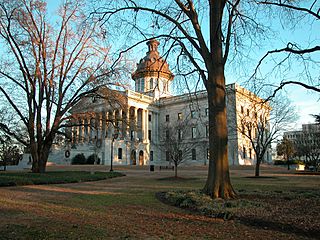
Contents
Executive Branch: Leading the State
The executive branch is responsible for carrying out the state's laws. It's led by the governor.
Governor and Lieutenant Governor
The Governor of South Carolina is the leader of the state, much like the president is for the whole country. The governor is elected for a four-year term and can serve two terms in a row. The current governor is Henry McMaster, a member of the Republican Party.
The Lieutenant Governor is the second-in-command. If the governor can't do their job, the lieutenant governor takes over. Since 2018, the governor and lieutenant governor are elected together on the same team.
Elected Cabinet Members
In South Carolina, voters elect eight leaders for the executive branch, not just the governor. This is different from many states where the governor appoints most of these officials. This group of elected leaders is often called the cabinet.
Here are the main elected officials in South Carolina's executive branch:
| Office | Office Holder | Party | Since | Method of selection | Term | ||
|---|---|---|---|---|---|---|---|
| Governor of South Carolina | 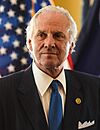 |
Henry McMaster | Republican | January 24, 2017 | Elected by voters | 4 years, can be re-elected once | |
| Lieutenant Governor of South Carolina |  |
Pamela Evette | Republican | January 9, 2019 | Elected with the governor | 4 years, no limit | |
| Attorney General of South Carolina | 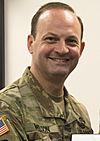 |
Alan Wilson | Republican | January 12, 2011 | Elected by voters | 4 years, no limit | |
| Commissioner of Agriculture | 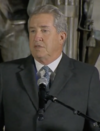 |
Hugh Weathers | Republican | September 14, 2004 | Elected by voters | 4 years, no limit | |
| Comptroller General |  |
Brian J. Gaines | Democratic | May 12, 2023 | Elected by voters | 4 years, no limit | |
| Secretary of State | 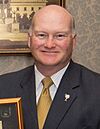 |
Mark Hammond | Republican | January 15, 2003 | Elected by voters | 4 years, no limit | |
| Treasurer |  |
Curtis Loftis | Republican | January 12, 2011 | Elected by voters | 4 years, no limit | |
| South Carolina Superintendent of Education |  |
Ellen Weaver | Republican | January 11, 2023 | Elected by voters | 4 years, no limit | |
Legislative Branch: Making the Laws
The South Carolina General Assembly is the state's legislature, which means it's the part of government that makes laws. It has two parts, or chambers, making it bicameral.
- The South Carolina House of Representatives has 124 members who serve two-year terms.
- The South Carolina Senate has 46 members who serve four-year terms.
Both chambers meet at the South Carolina State House in Columbia. The Republican Party currently has the most members in both the House and the Senate.
In the past, each county had a set number of representatives, which gave rural areas with fewer people a lot of power. A court case called Reynolds v. Sims changed this. Now, districts are based on population, so each person's vote has about the same weight.
Judicial Branch: The Court System
The judicial branch is made up of the state's courts. The courts interpret the laws and make sure they are applied fairly.
- Family Court: This court handles cases about family matters, like marriage and adoption. It also deals with most cases involving young people under seventeen.
- Circuit Court: This is the main trial court in South Carolina. It has two parts: one for civil cases (disputes between people) and one for criminal cases. The state is divided into 16 judicial circuits, and judges are elected by the General Assembly for six-year terms.
- Court of Appeals: If someone believes a mistake was made in a trial, they can appeal to this court. The Court of Appeals reviews decisions from the Circuit and Family Courts. It has a chief judge and eight other judges.
- Supreme Court: The South Carolina Supreme Court is the highest court in the state. It has the final say on legal questions. It is made up of a Chief Justice and four other justices, who are elected to ten-year terms.
The South Carolina Constitution
A constitution is a rulebook for a government. South Carolina has had seven different constitutions since it became a state.
- 1776: The first constitution.
- 1790: Gave more power to areas away from the coast.
- 1868: This was the only constitution approved by a popular vote. It created a public school system and gave all men the right to vote, no matter their race.
- 1895: This is the constitution the state still uses today, but it has been changed many times. When it was first written, it made it very difficult for African Americans to vote by requiring poll taxes and literacy tests. These rules were removed after the U.S. Voting Rights Act of 1965 was passed.
Because the 1895 constitution is so old and has hundreds of amendments (changes), some people think South Carolina should write a new one.
Local Government
Local governments run cities, towns, and counties. In South Carolina, these governments have historically had less power than the state government.
Each of South Carolina's 46 counties has its own elected council. This system was set up by the Home Rule Act of 1975, which gave counties more power to handle their own issues. However, the state legislature still has a lot of say in local matters.
Cities and towns are run by municipal governments. State law makes it difficult for cities to grow their borders through annexation (adding new land), which is why many cities in South Carolina are smaller than those in nearby states.
South Carolina in the U.S. Government
South Carolina, like all states, elects people to represent it in the federal government in Washington, D.C.
U.S. Senate
The state has two senators in the United States Senate.
| Portrait | Senator | Party | Since |
|---|---|---|---|
| Lindsey Graham | Republican | January 3, 2003 | |
| Tim Scott | Republican | January 2, 2013 |
U.S. House of Representatives
South Carolina has seven representatives in the United States House of Representatives. Each one represents a different district in the state.
| Portrait | District | Representative | Party | Since |
|---|---|---|---|---|
| District 1 | Nancy Mace | Republican | January 3, 2021 | |
| District 2 | Joe Wilson | Republican | December 18, 2001 | |
| District 3 | Sheri Biggs | Republican | January 3, 2025 | |
| District 4 | William Timmons | Republican | January 3, 2019 | |
| District 5 | Ralph Norman | Republican | June 26, 2017 | |
| District 6 | Jim Clyburn | Democratic | January 3, 1993 | |
| District 7 | Russell Fry | Republican | January 3, 2023 |
State Finances and Taxes
The state government collects money through taxes to pay for public services like schools, roads, and police.
Taxes
- Income Tax: People pay a tax based on how much money they earn.
- Sales Tax: There is a 6% state sales tax on most things you buy. The money from this tax is used only for education. Counties and cities can add their own sales taxes, which can make the total tax rate higher in some places.
- Property Tax: People who own property, like a house or land, pay a tax on it each year. This money is collected by local governments and is mostly used to fund public schools.










